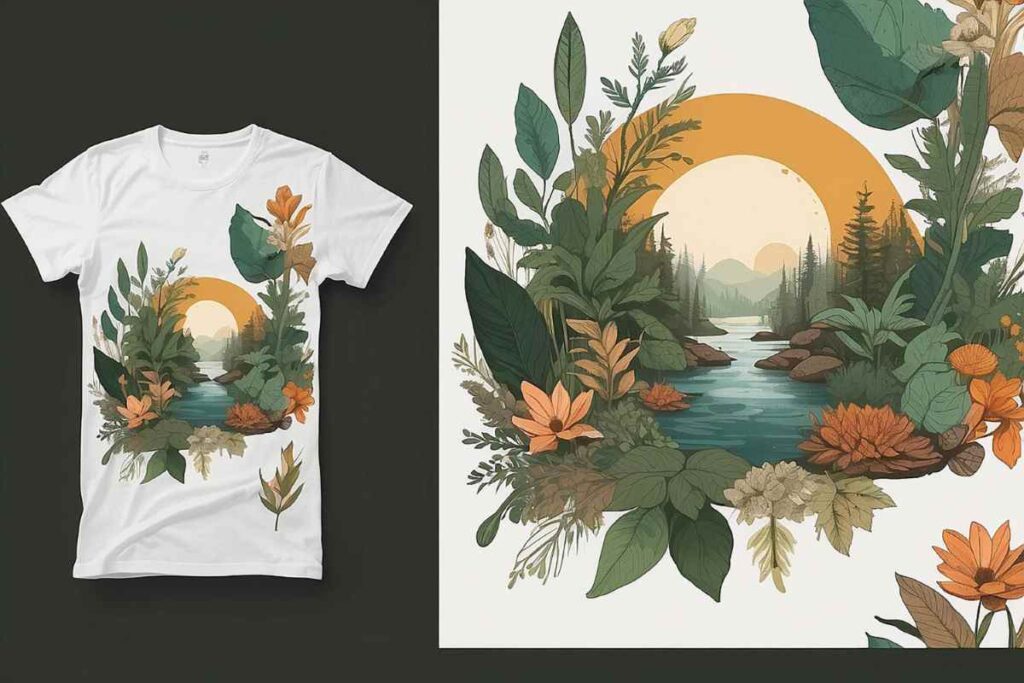DTF transfers, or Direct to Film transfers, are revolutionizing the world of custom printing, offering unique advantages over traditional methods. In recent years, this innovative technique has gained traction due to its ability to print vibrant, detailed designs on a wide array of fabrics, from cotton to polyester blends. Unlike sublimation and direct-to-garment (DTG) printing, which often restrict fabric compatibility, DTF transfers excel in versatility, making them an ideal choice for various projects. By leveraging advanced technology, DTF printing achieves high-quality results while maintaining a budget-friendly profile for both small businesses and independent creators. This article examines the many benefits of DTF transfers and how they stack up against other printing methods, including sublimation and DTG, guiding you to make the best choice for your next custom apparel endeavor.
Direct to Film printing, often referred to as DTF printing, has emerged as a game changer in the realm of custom apparel. With its focus on applying intricate designs onto a film before transferring them seamlessly onto various fabric types, this method presents a compelling alternative to more conventional options like sublimation and direct-to-garment (DTG) printing. DTF technology is particularly noteworthy for its broad fabric compatibility, enabling it to cater to diverse materials and printing needs, which could previously be a challenge with methods such as screen printing. By exploring DTF’s capabilities and how it differentiates itself from DTG and other techniques, you can better understand its potential for enhancing your fabric printing projects.
Understanding DTF Transfers
Direct to Film (DTF) transfers represent a significant advancement in the realm of custom printing, allowing for exceptionally vibrant graphics that can adhere to a variety of fabric types. This method utilizes a unique film onto which images are printed using specialized inks. After printing, the film is coated with a powdered adhesive before being heat-pressed onto the chosen material. The result is a glossy finish that not only enhances visual appeal but also offers durability, making it an ideal choice for both apparel and promotional items.
Furthermore, DTF printing is increasingly popular because of its versatility in fabric compatibility. Unlike some traditional methods like sublimation that mainly work with polyester materials, DTF can easily print on cotton, polyester, blends, and even more challenging fabrics. This adaptability allows businesses to cater to a wider range of customer needs, ultimately creating new opportunities in the printing market.
Sublimation vs. DTF: Key Differences
Sublimation and DTF printing serve unique purposes in the custom printing industry, each with its respective advantages. Sublimation, known for its color vibrancy and smooth feel, allows inks to chemically bond with polyester fabrics. However, it falls short in terms of fabric compatibility, as sublimation only works on polyester and requires special conditions for optimal results. This limitation can exclude a large segment of custom apparel market that prefers cotton or blended fabrics.
In contrast, DTF printing transcends these boundaries by allowing high-quality prints on nearly any fabric type, including those that are strictly cotton or blends. This means that businesses offering DTF transfers can target both casual wear and more specialized clothing designs, expanding their customer base dramatically. Moreover, while sublimation printing requires a specific printer and setup, DTF provides a more accessible starting point for aspiring creators.
Direct-to-Garment (DTG) vs. DTF
When comparing Direct-to-Garment (DTG) printing with DTF, several distinctions arise that affect a business’s decision on which method to adopt. DTG is known for its ability to deliver intricate and detailed designs directly onto fabric, primarily cotton. However, the costs associated with DTG printers and maintenance can be quite substantial, which may deter smaller businesses and entrepreneurs.
DTF, on the other hand, provides a more economical alternative without compromising design quality. One of the standout features of DTF is its ability to seamlessly print on a variety of materials, while DTG remains limited primarily to cotton. Furthermore, the production speed of DTF often surpasses that of DTG, making it a preferred choice for those needing quick turnarounds on orders.
Recent Innovations in DTF Technology
The evolution of DTF printing technology continues to reshape the custom apparel landscape, with recent innovations enhancing both production capabilities and design quality. Improved color gamuts and automated printing processes offer businesses faster and more efficient outputs, appealing to both large-scale operations and smaller crafters. The progression towards roll-to-roll printing further emphasizes the potential of DTF as a scalable option for various printing needs.
Moreover, as digital technology advances, it has become easier for businesses to customize and personalize prints on an unprecedented scale. The influx of user-friendly printers and dedicated software solutions is making DTF printing accessible to a broader audience, from hobbyists to professional printers. This surge in popularity is reflected in the increasing number of suppliers offering tailored services to meet the growing demands of creators.
Fabric Compatibility in DTF Transfers
One of the most compelling advantages of DTF transfers is their exceptional fabric compatibility. This printing method is suitable for a diverse array of textiles, from cotton to polyester to blends, which makes it an attractive option for businesses looking to maximize their production versatility. The ability to accommodate various fabric types means that entrepreneurs can meet the demands of an expansive customer base without being restricted to a single fabric type.
In addition, the adaptability of DTF printing does not compromise the quality of the final product. Users can create vibrant, intricate designs that adhere well to all materials, ensuring that prints maintain their aesthetic appeal and durability. This is a significant consideration for businesses that aim to offer a range of products, as the focus on quality can lead to increased customer satisfaction and repeat orders.
The Cost Effectiveness of DTF Printing
In today’s competitive market, cost efficiency is a crucial consideration for businesses exploring printing options. DTF printing typically stands out as a budget-friendly method, particularly for small businesses or independent creators. Unlike DTG printers, which require hefty investments in machinery and maintenance, the initial setup for DTF is generally less daunting. This allows new businesses to introduce their products without overextending their finances.
Moreover, DTF printing optimizes production costs by accommodating smaller runs, enabling business owners to print on-demand and thereby preventing unnecessary inventory expenditure. This flexibility can be a game-changer, allowing entrepreneurs to unleash their creativity without the burden of large upfront costs, making it an appealing choice in the realm of custom apparel.
Frequently Asked Questions
What are the advantages of DTF Transfers compared to sublimation printing?
DTF transfers offer a significant advantage over sublimation printing due to their wider fabric compatibility. While sublimation is primarily limited to polyester fabrics, DTF allows for high-quality prints on various materials, including cotton and blends. This broader application enables businesses to cater to diverse customer needs.
How do DTF Transfers differ from Direct to Garment printing?
DTF transfers differ from Direct to Garment (DTG) printing primarily in fabric compatibility and cost-effectiveness. DTG is typically restricted to cotton fabrics, whereas DTF can print on a wide range of materials. Additionally, DTF printing is usually more budget-friendly and suitable for smaller batches, making it ideal for startups.
Can DTF Transfers be used on different fabric types?
Yes, DTF transfers are highly versatile and can be used on an array of fabric types, including cotton, polyester, and blends. This adaptability makes DTF a popular choice for various printing applications unlike some traditional methods that may only work with specific materials.
What is the process for creating DTF Transfers?
The DTF transfer process involves printing your design onto a special film, which is then heat-transferred onto the desired fabric. This method results in vibrant, detailed designs and allows for quick production compared to methods like screen printing or DTG.
Are DTF Transfers cost-effective for small businesses?
Yes, DTF transfers are generally considered cost-effective, especially for small businesses. The initial investment in DTF printers and materials is typically lower than that of DTG printing, making it a suitable option for entrepreneurs looking to create custom designs without significant financial burden.
How does DTF printing technology keep up with recent trends?
DTF printing technology is rapidly evolving, introducing innovations such as improved color gamuts and automated solutions. These advancements enable faster production times and enhanced customization options, making DTF increasingly attractive to both businesses and consumers in an ever-demanding market.
| Aspect | DTF Transfers | Sublimation | DTG Printing | Screen Printing |
|---|---|---|---|---|
| Overview | Modern printing technology using film for vibrant designs. | Dye becomes part of the fabric, mainly for polyester. | Direct printing on garment, primarily cotton. | Traditional method needing setup for designs. |
| Fabric Compatibility | Works on cotton, polyester, and blends. | Limited to polyester fabrics. | Best for cotton; other materials may not yield good results. | Flexible but requires setup for different fabrics. |
| Cost Effectiveness | Generally budget-friendly for small batches. | Costs can be high, especially for dyes and equipment. | Higher setup and maintenance costs. | Setup can raise costs, especially in larger volumes. |
| Printing Speed | Quick production with improved technologies. | Slower process due to dyeing. | Can be slower with larger orders. | Setup time can affect speed; generally slower than DTF. |
| Design Complexity | Handles intricate designs effectively. | Best for simpler or all-over prints due to dyeing. | High quality for detailed designs on cotton. | Complex designs need more setup and effort. |
Summary
DTF Transfers have become a pivotal option for individuals and businesses in the custom printing industry. This innovative method not only supports a wide variety of fabric types but also caters to the growing demand for high-quality, vibrant designs. Its cost-effectiveness makes it an attractive choice for those looking to minimize startup expenses while maximizing design flexibility. As the printing landscape continues to evolve, DTF printing stands out as a versatile and efficient solution, enabling creators and entrepreneurs to fulfill diverse client needs with impressive outcomes.


